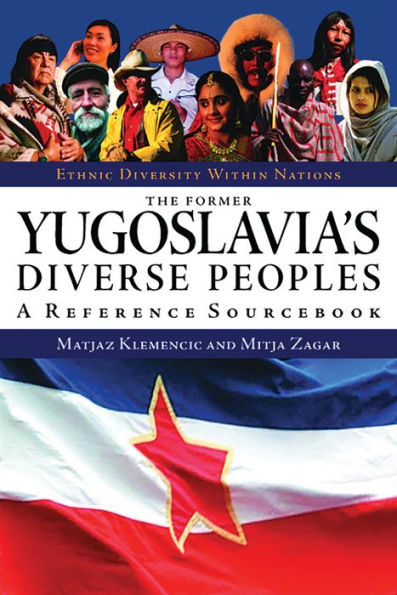| Series Editor's Foreword | ix |
| Preface | xiii |
| List of Maps | xxi |
| Early History | |
| 1 | The South Slavic Peoples: Sixth Century to the Early Nineteenth Century | 1 |
| Settlement of South Slavs | 1 |
| Histories of the South Slavic Nations | 11 |
| Cultural History from the Settlement of the Slavs until 1800 | 28 |
| Conclusion | 38 |
| Timeline | 38 |
| Significant People, Places, and Events | 40 |
| Bibliography | 42 |
| 2 | The Yugoslav Nations, from 1800 to World War I | 44 |
| Distribution of "Ethnic" Groups and Growth of Populations | 45 |
| Political Histories of the South Slavic Ethno-Nations | 47 |
| The Yugoslav Idea in the Nineteenth and Early Twentieth Centuries | 65 |
| Cultural History from the 1800s until 1918 | 66 |
| Conclusion | 75 |
| Timeline | 75 |
| Significant People, Places, and Events | 78 |
| Bibliography | 80 |
| Early to Mid-Twentieth Century | |
| 3 | Yugoslav "Nations" during World War I and the Establishment of the Kingdom of Serbs, Croats, and Slovenes | 82 |
| World War I | 82 |
| Cultural History during World War I (1914-1918) | 92 |
| The Creation of the First Yugoslav State | 94 |
| Timeline | 94 |
| Significant, People, Places, and Events | 95 |
| Bibliography | 97 |
| 4 | "The First Yugoslavia": Yugoslav Nations between the First and Second World Wars (1918-1941) | 99 |
| The Kingdom of Serbs, Croats, and Slovenes | 99 |
| Ethnic Structure of the Population in the New Kingdom | 103 |
| Constitutional and Political Development in the Kingdom of Serbs, Croats, and Slovenes and the Kingdom of Yugoslavia | 112 |
| Ethnic Relations and the Unresolved "National Question(s)" | 123 |
| Interwar Histories of the Yugoslav Nations | 125 |
| Cultural Developments during the Period of Karadjordjevic's Yugoslavia, 1918-1941 | 141 |
| The Unresolved "National Question(s)" | 146 |
| Timeline | 147 |
| Significant, People, Places, and Events | 149 |
| Bibliography | 151 |
| World War II to the 1990s | |
| 5 | Yugoslav Nations during World War II (1941-1945) | 153 |
| The Occupation and Division of Yugoslavia | 153 |
| The Beginnings of the Armed Resistance | 156 |
| The Reaction of the Yugoslav Government-in-Exile to the National Liberation Movement | 158 |
| The National Liberation and Civil War, 1941-1945 | 160 |
| Americans from Yugoslavia and the Events in the Old Homeland during World War II | 163 |
| Changes in the Ethnic Structure of the Population during World War II | 164 |
| Histories of the Individual Yugoslav Nations | 166 |
| Culture during World War II, 1941-1945 | 179 |
| The End and a New Beginning | 183 |
| Timeline | 184 |
| Significant, People, Places, and Events | 187 |
| Bibliography | 193 |
| 6 | The Yugoslav Federation, 1945-1991: The History of the "New" Yugoslavia | 194 |
| The Communist Party of Yugoslavia Takes Control | 194 |
| The Constitutional Development of the Yugoslav Federation, 1945-1980 | 209 |
| Changes in Ethnic Structure of the Population after World War II | 217 |
| Histories of Individual Yugoslav Nations | 221 |
| Culture in the "New Yugoslavia," 1945-1990 | 254 |
| Conclusion: The Death of the Country | 266 |
| Timeline | 267 |
| Significant People, Places, and Events | 272 |
| Bibliography | 284 |
| The Contemporary Situation and a Look to the Future | |
| 7 | The Region of the Former Yugoslavia after 1990: New States and a New Situation | 287 |
| The Dissolution of Yugoslavia | 287 |
| Slovenia after 1990 | 294 |
| Croatia after 1990 | 301 |
| Bosnia and Herzegovina after 1990 | 310 |
| The Federal Republic of Yugoslavia and of Serbia-Montenegro after 1990 | 323 |
| "Serboslavia," or Great Serbia--The Dilemma that Finally Caused the Dissolution of the Socialist Federated Republic of Yugoslavia | 329 |
| The Political "Death" of Slobodan Milosevic and the New Beginning in Serbia | 344 |
| Montenegro | 349 |
| Sandzak: Is a New Balkan War Possible There? | 353 |
| Macedonia after 1990 | 355 |
| Culture in the Countries of the Former Yugoslavia after 1990 | 364 |
| Timeline | 366 |
| Significant People, Places, and Events | 375 |
| Bibliography | 386 |
| Bibliography | 389 |
| Index | 399 |
| About the Authors | 425 |




